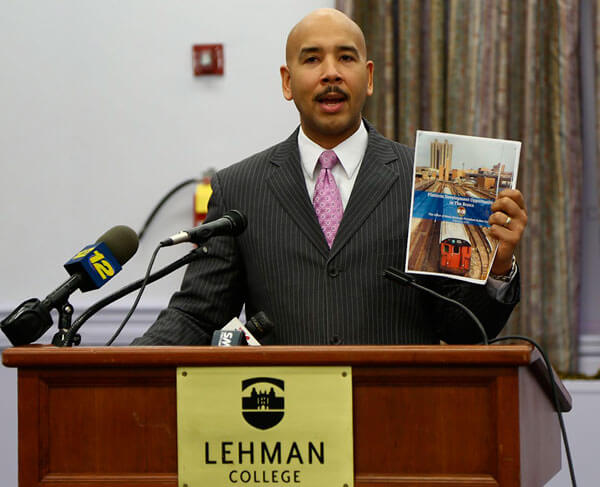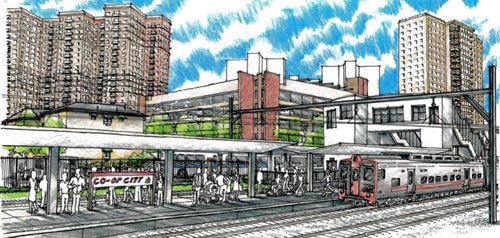Nearly 46 years after a similar attempt, the Concourse Yard is being eyed once again for platform development.
A Wednesday, February 3 press conference held by Borough President Ruben Diaz, Jr. at Lehman College showcased his preliminary report addressing development above three borough railyard sites including the Concourse Yard, the East 149th Street Yard in Mott Haven and the #1 Train Yard connecting Riverdale and Kingsbridge at West 240th Street and Broadway.
According to Diaz, the report discovered that the Concourse Yard located adjacent to Lehman College, offers the most immediate potential for development.
He said constructing a platform there would allow for approximately two million square feet of new development without a significant upzoning.
The cost for that platform alone would range between $350 and $500 million.
The borough president’s report stated the East 149th Street and West 240th Street yards to be unsuitable for platform development at this time.
Diaz’s report considers a variety of options for the Concourse Yard’s platform including mixed-income housing, homeownership opportunities, new retail space and an expanded Lehman College campus.
“Developing a platform at the Concourse Yard is a creative way to continue the revitalization of our borough while bringing new amenities and resources to the northwest Bronx,” expressed Diaz.
“Smart planning for the future requires us to consider all options including real estate that does not yet exist.”
Encompassing three parcels totaling nearly 19 acres, the Concourse Yard supplies storage, maintenance and washing facilities for the B, D and 4 train lines.
Its central yard, situated between Bedford Park Boulevard and West 205th Street, encompasses 10.27 acres.
Additionally, another yard, containing 8.47 acres could be used to expand Lehman College.
This yard is approximately 18 feet below grade and its entire perimeter is surrounded by a thick concrete retaining wall.
The borough president added his office will contact stakeholders from the area to discuss the site’s potential and outline its future development.

Afterwards, his office will ask the Metropolitan Transit Authority to issue a ‘Request for Expressions of Interest’ for the Concourse Yard’s development to better gauge the costs and potential of a platform at the site.
A MTA spokeswoman said the MTA looks forward to studying the borough president’s report.
According to Lloyd Ultan, Bronx borough historian, this is not the first time a platform development above the Concourse Yard has been suggested.
In the early 1960s, the City University of New York designed a plan to construct a new campus for Bronx Community College on a deck over the Concourse Yard.
Ground was broken in 1970 for the $61 million, 13-acre campus supported by 800 steel reinforced concrete columns set between the subway tracks.
This planned campus would have included a new dining hall and student center, a five-story engineering and science building, gymnasium facilities and new classroom space among other features.
The platform was slated for completion in July 1971 while the campus was expected to open in September 1973.
Ultan said the project was abandoned when the city discovered the pillars would have prevented subway cars from entering and exiting the yard.
As the city faced fiscal crisis in the 1970s, no attempt was made to revive the project and Bronx Community College would find a home at its present day location, the former New York University campus in University Heights.
Local elected officials and community leaders shared their opinions on the recently proposed Concourse Yard project.
“The borough president has presented us with an interesting plan and after reviewing it I agree that the Concourse Yard is an area of real potential and believe the surrounding area would benefit from development,” said Councilman Andrew Cohen.
“I welcome this new opportunity to advance vibrant development which includes much needed housing to an area stifled by an eyesore,” said Senator Jeff Klein.
“Housing at this area would be fine, but one possible drawback is the noise generated by the elevated Jerome Avenue line to the west,” said Ultan.
























